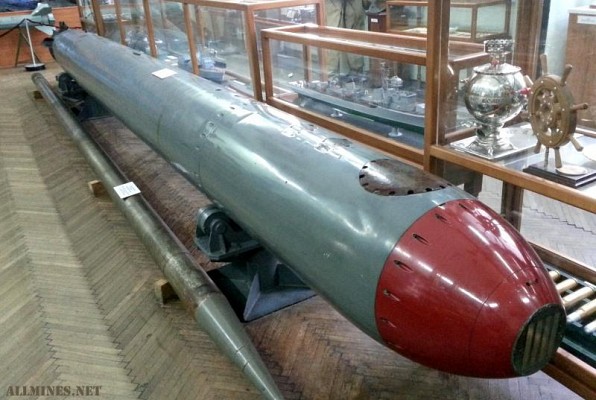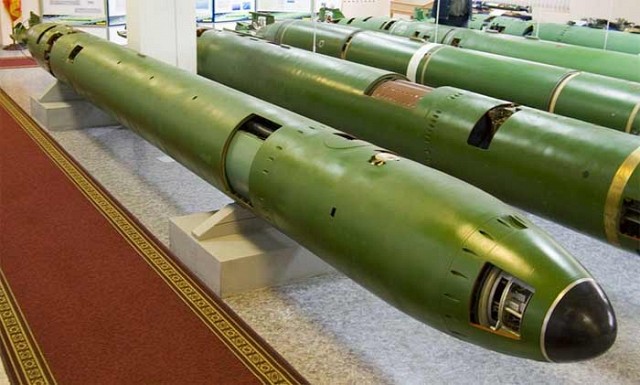SAET-50
Overview

SAET-50
Soviet 533mm SAET-50 torpedo on display at the Museum of the History of the Black Sea Fleet, Sevastopol.
Source: DK at www.allmines.net -
© Copyright lies with original owner
1952 - 1955 (SAET-50M)
1951 - ? (series production)
China
Russian for "homing acoustic electric-powered torpedo"
SAET-2 (design project)
Yu-4 / 鱼-4 (Chinese production)
China
Description
Introduction
SAET-50 is an early Cold War era heavyweight torpedo of Soviet origin. SAET-50 was the first homing torpedo in Soviet service. It was a local adaptation of the Nazi German Zaunkönig torpedo technology found on the captured U-250 submarine in 1945.
Design
SAET-50 is based on the design of the ET-46 electric straight running torpedo, which in turn is derived from the Nazi German G7e torpedo. The homing head is in turn derived from the Nazi German G7es Zaunkönig torpedo. SAET-50 is an electric torpedo using lead-acid batteries, an electric motor and contra-rotating propellers.
Firepower
A 300 kg high explosive warhead is carried on the SAET-50. Some sources indicate a 375 kg warhead. This is detonated under the keel of a surface vessel using a proximity fuse. A back-up contact fuse is present as well. Maximum speed is 23 knots, which reduces to 15 knots in terminal mode. The most limiting factor is the maximum effective range of just over 4 km.
Guidance
SAET-50 is a passive homing torpedo for use against surface vessels. The SAET-50 is a straight running torpedo at shallow depth for a set distance at which point the homing head is switched on. The use of the passive homing sensor makes the torpedo automatically reduce speed. This is required to reduce noise to a level where the sensor can function properly. Noisy vessels can be detected out to 1 km. Slower surface vessels can be detected at 600 to 800 distance.
Platforms
SAET-50 was developed for use by submarines against surface vessels. Various types of Soviet diesel-electric submarines carried the SAET-50 for many decades. Both 1950's era Soviet submarines and the SAET-50 were produced in China and used in significant numbers.
Users
SAET-50 was acquired in quantity in the Soviet navy and was used along higher speed non-homing torpedoes. For many decades SAET-50 was used. It was also exported and local production in China was set up with Soviet help. SAET-50M was produced only for Soviet use.
Variants

533mm Yu-4
Photo of what is reported to be the Chinese Yu-4 torpedo, the Chinese production model of the Soviet SAET-50 torpedo.
Source: www.militaryrussia.ru -
© Copyright lies with original owner
List of SAET-50 variants
Details
Related articles

SAET-60
Much improved series of passive homing electric torpedoes with both greater speed and range.